Exploring Baku: A blend of ancient heritage and modern progress PHOTO
To highlight Baku's historical and cultural significance, the incoming United Nations Climate Change Conference (COP29) presidency invited nine media professionals from India, Indonesia, the Philippines, and Singapore to explore Azerbaijan's vibrant capital. As part of this exclusive tour, The Manila Times delves into Baku, a city that masterfully blends ancient history with modern progress.
Nine media professionals from India, Indonesia, the Philippines, and Singapore were invited by the incoming United Nations Climate Change Conference (COP29) presidency to visit the historic city of Baku in Azerbaijan.
The Republic of Azerbaijan, a nation of 10 million people, is a fascinating transcontinental country located at the boundary of Eastern Europe and West Asia. Its capital is Baku, situated along the eastern coast of the Caspian Sea.
While Azerbaijan does not have an embassy in the Philippines, it does have an honorary consulate. The closest Azerbaijani embassy is located in Jakarta, Indonesia.
To reach Baku, Azerbaijan, I personally traveled to Jakarta to secure my visa at the embassy before continuing my journey via Istanbul, Türkiye. The return flight process was the same. In total, the air travel alone took approximately 21 hours. Overall, the entire travel time amounted to around 30 hours when factoring in pre-departure preparations and layovers.
The old city of Baku
The old city of Baku, also known as Icherisheher, is a historically rich and architecturally significant part of Baku, the capital of Azerbaijan. Enclosed by ancient walls, this Unesco World Heritage site is a captivating blend of medieval, Islamic and Persian influences, offering a window into the region's storied past.
Icherisheher dates back to at least the 12th century, though some structures are believed to have been built even earlier. It served as a major urban center along the Silk Road, contributing to its historical and economic importance. Over the centuries, it has also witnessed numerous invasions and rulers, including the Shirvanshahs, the Safavids and the Russian Empire, each leaving their mark on the city's architecture and culture.
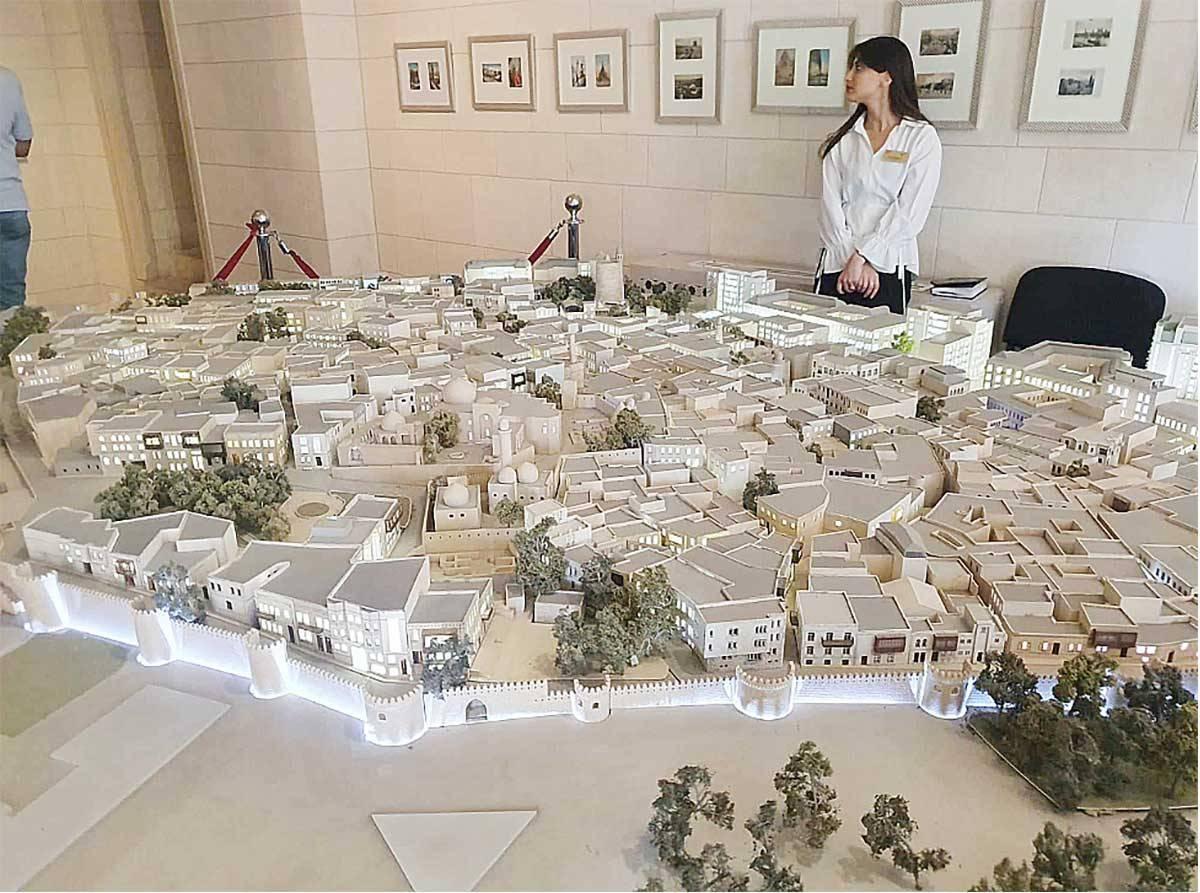
The Double Gates
The most prominent entrance to the Old City is the Double Gates (Gosha Gala Gapisi), an iconic symbol of Icherisheher. They are situated on the western side and serve as the main access point.
These gates date back to the 12th century, built during the reign of the Shirvanshahs to fortify the city against invasions. The double-arched structure reflects typical medieval defensive architecture, designed to enhance security and control entry.
The gates are flanked by robust towers and feature intricate stone carvings. Above the gates are inscriptions and emblems that provide insight into the historical periods they have witnessed.
There are other gates, such as the Salyan Gates, located on the southern side of the Old City, and the Tagiyev Gates, named after Haji Zeynalabdin Tagiyev, a prominent Azerbaijani philanthropist and oil baron, near the Tagiyev Mosque.
The walls and gates of Icherisheher were originally constructed in the 12th century and later reinforced in the 16th century. The primary purpose was to protect the city from frequent invasions and raids. Over time, the gates not only served as fortifications but also became integral to the city's daily life, controlling the flow of people and goods.
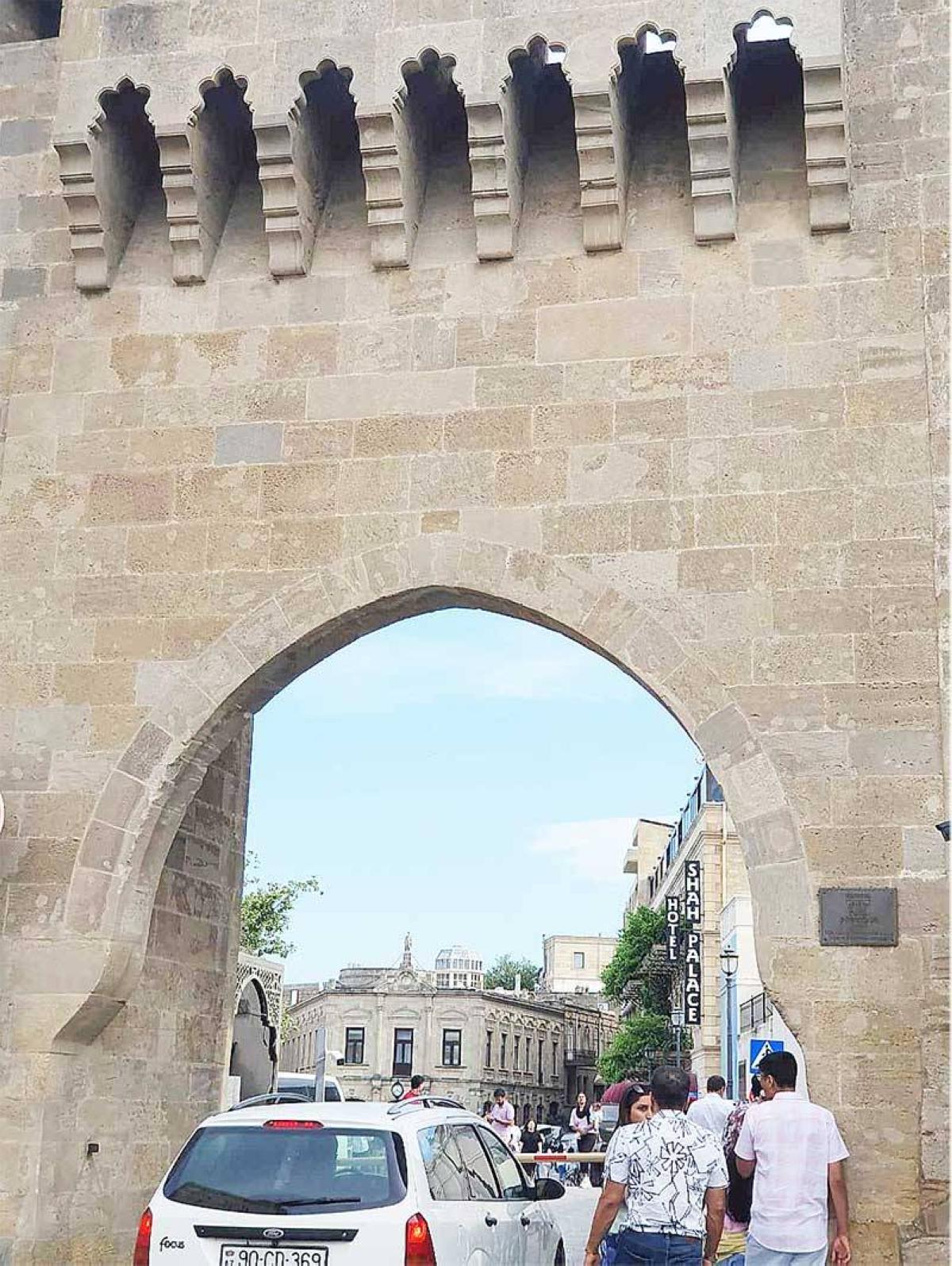
Today, the gates of the Old City are more than just historical artifacts; they are vibrant parts of Baku's cultural and touristic landscape. Visitors to Icherisheher pass through these gates to explore the ancient streets, historical buildings, and cultural sites within. The Double Gates, in particular, serves as a ceremonial entrance during cultural events and festivals, underscoring their continued importance in Baku's urban identity.
The gates, along with the walls of Icherisheher, have undergone various restoration efforts to preserve their historical integrity. These efforts are crucial in maintaining the structural stability and aesthetic appeal of these ancient barricades, ensuring that they remain a lasting symbol of Baku's rich history.
The gates of the Old City of Baku are not just entry points but symbols of the city's resilience and historical depth. They stand as a testament to the architectural and cultural achievements of the past and continue to play a vital role in the heritage and identity of modern Baku.
The Maiden Tower
The Maiden Tower (Qiz Qalasi) is one of Baku's most iconic landmarks, symbolizing Azerbaijan's rich history and cultural heritage. Situated in the southeastern part of the Old City, this remarkable structure has intrigued historians, architects and visitors alike for centuries due to its unique design and mysterious origins.
The exact origins of the Maiden Tower are shrouded in mystery, with various theories suggesting its construction dates back to different periods ranging from the 6th to the 12th century. Its purpose has also been widely debated, with speculations ranging from a Zoroastrian fire temple and astronomical observatory to a defensive fortress and a beacon.
The tower stands at approximately 29.5 meters (97 feet) and has a cylindrical form with a slightly tapered structure, making it wider at the base than at the top. Constructed from limestone, the walls are notably thick, measuring around 5 meters (16 feet) at the base, providing robustness and durability.
The gates are flanked by robust towers and feature intricate stone carvings. Above the gates are inscriptions and emblems that provide insight into the historical periods they have witnessed.
There are other gates, such as the Salyan Gates, located on the southern side of the Old City, and the Tagiyev Gates, named after Haji Zeynalabdin Tagiyev, a prominent Azerbaijani philanthropist and oil baron, near the Tagiyev Mosque.
The walls and gates of Icherisheher were originally constructed in the 12th century and later reinforced in the 16th century. The primary purpose was to protect the city from frequent invasions and raids. Over time, the gates not only served as fortifications but also became integral to the city's daily life, controlling the flow of people and goods.
Today, the gates of the Old City are more than just historical artifacts; they are vibrant parts of Baku's cultural and touristic landscape. Visitors to Icherisheher pass through these gates to explore the ancient streets, historical buildings, and cultural sites within. The Double Gates, in particular, serves as a ceremonial entrance during cultural events and festivals, underscoring their continued importance in Baku's urban identity.
The gates, along with the walls of Icherisheher, have undergone various restoration efforts to preserve their historical integrity. These efforts are crucial in maintaining the structural stability and aesthetic appeal of these ancient barricades, ensuring that they remain a lasting symbol of Baku's rich history.
The gates of the Old City of Baku are not just entry points but symbols of the city's resilience and historical depth. They stand as a testament to the architectural and cultural achievements of the past and continue to play a vital role in the heritage and identity of modern Baku.
The Maiden Tower
The Maiden Tower (Qiz Qalasi) is one of Baku's most iconic landmarks, symbolizing Azerbaijan's rich history and cultural heritage. Situated in the southeastern part of the Old City, this remarkable structure has intrigued historians, architects and visitors alike for centuries due to its unique design and mysterious origins.
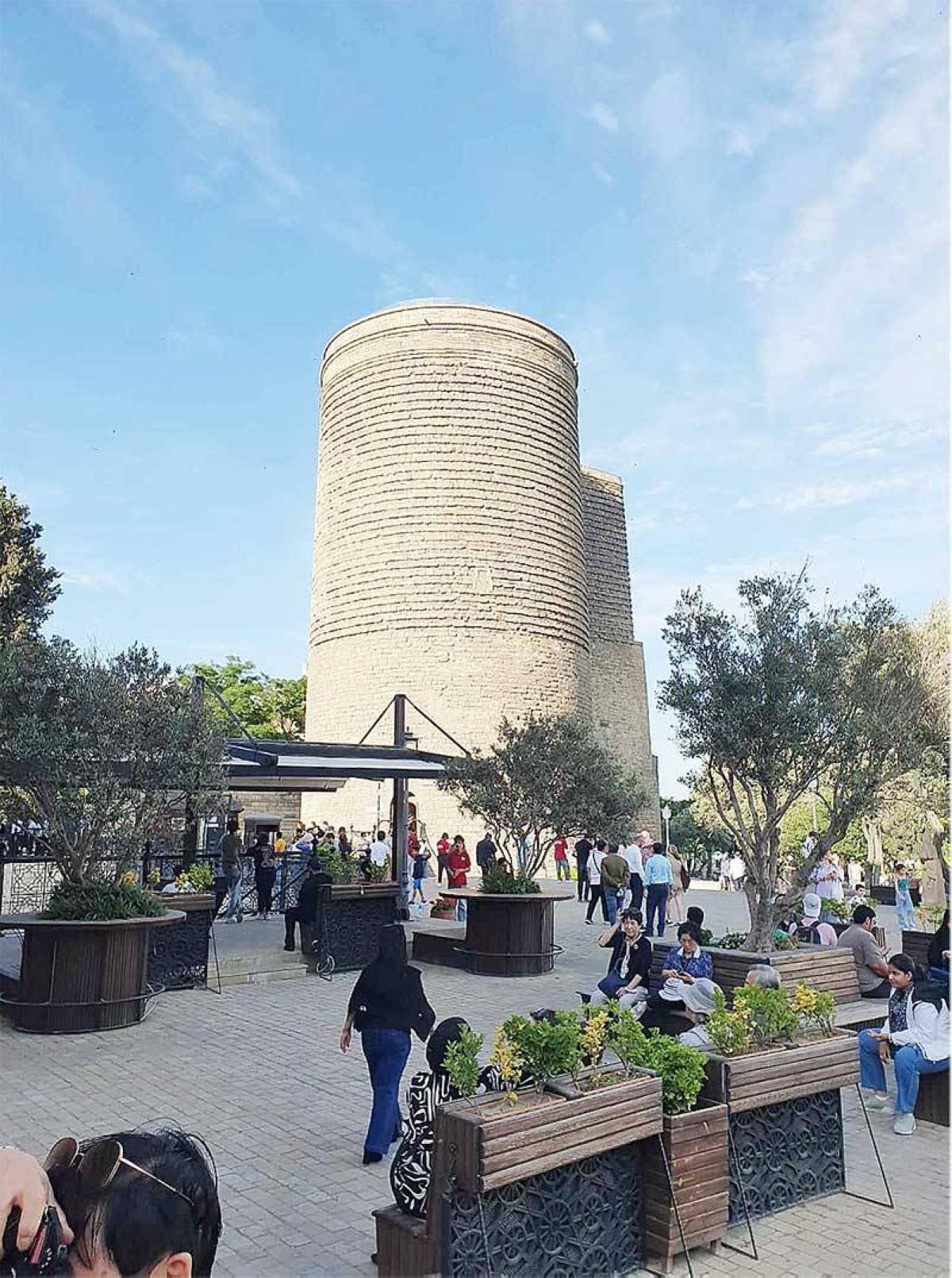
The exact origins of the Maiden Tower are shrouded in mystery, with various theories suggesting its construction dates back to different periods ranging from the 6th to the 12th century. Its purpose has also been widely debated, with speculations ranging from a Zoroastrian fire temple and astronomical observatory to a defensive fortress and a beacon.
The tower stands at approximately 29.5 meters (97 feet) and has a cylindrical form with a slightly tapered structure, making it wider at the base than at the top. Constructed from limestone, the walls are notably thick, measuring around 5 meters (16 feet) at the base, providing robustness and durability.
The tower features a distinctive vertical projection on its western facade, which adds to its unique silhouette. A spiral staircase winds its way up through the tower, leading to the various floors and culminating at the rooftop, which offers panoramic views of Baku and the Caspian Sea.
The Maiden Tower comprises eight levels, each with its own function. The interiors include niches, small windows, and rooms, though the original uses of these spaces remain a topic of speculation.
Today, the interior houses a museum showcasing the history and legends associated with the tower and exhibits on Baku's development.
The Maiden Tower is an enduring symbol of Baku and Azerbaijan, often depicted in art, literature, and even currency. Its image represents the city's rich historical tapestry and architectural heritage.
In 2000, the Maiden Tower, along with the Old City of Baku and the Palace of the Shirvanshahs, was designated a Unesco World Heritage Site. This recognition highlights its global cultural importance and ensures its preservation for future generations.
An inscription of the Unesco recognition is found on the first floor of the Maiden Tower.
The Maiden Tower attracts countless visitors each year, serving as a major tourist attraction. Its museum provides educational insights into Baku's history, architecture, and the various theories surrounding the tower's origins.
The Maiden Tower has undergone various restoration efforts to maintain its structural integrity and historical authenticity. These efforts are crucial in preserving the tower amidst Baku's rapid modernization and urban development. The contrast between the ancient structure and the modern skyline of Baku, including the Flame Towers, underscores the city's blend of history and progress.
The Maiden Tower of Baku stands as a testament to the city's ancient heritage and architectural ingenuity. Its enigmatic origins, coupled with its historical and cultural significance, make it a focal point of interest and a cherished symbol of Azerbaijan. Whether viewed as a defensive bastion, a sacred temple or a backdrop for poignant legends, the Maiden Tower continues to captivate the imagination of all who encounter it.
Palace of the Shirvanshahs
The 15th-century palace complex was the residence of the Shirvanshah dynasty and is considered a masterpiece of Azerbaijani architecture.
The complex includes the main palace building, a mosque, a mausoleum, a bathhouse and the divankhana (courtroom).
Haji Bani Hamam
This place of interest is a traditional bathhouse that exemplifies medieval bath culture. It is known for its intricate tile work and historical significance.
Saint Bartholomew Church ruins
The ruins of the church built by Saint Bartholomew in the Old City of Baku hold significant historical and religious value. The original Saint Bartholomew Church was constructed in 1892 on the site where the apostle it was named after was believed to have been martyred in 71 AD. Located near the famous Maiden Tower, this is where Bartholomew was crucified by local pagans. The church, built by architect Johann Edel, featured traditional Russian church architectural elements and was adorned with icons of Bartholomew and other saints.
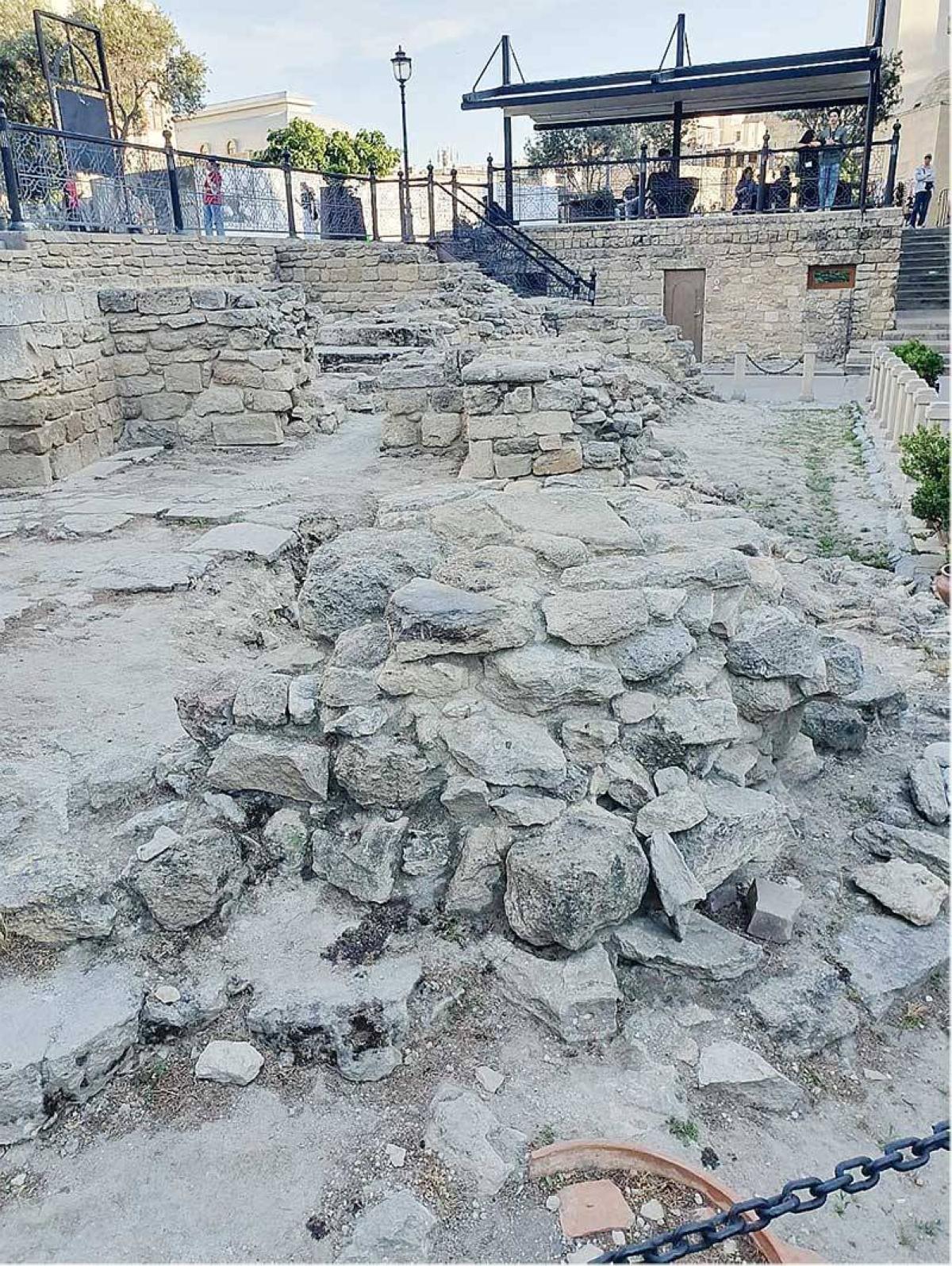
The church functioned until 1936, when it was demolished during the Soviet anti-religion campaigns. Despite its destruction, the site remains a place of reverence. Every year, on June 24, the Remembrance Day of Saint Bartholomew, the Baku diocese holds a prayer service at the church's remnants.
In 2003, Patriarch Bartholomew I of Constantinople brought some relics of Saint Bartholomew to Baku, which are now housed in the Holy Myrrhbearers Cathedral. The site was officially recognized as an archaeological monument in 2015.
The Old City is not just a historical site but a living part of Baku, bustling with local life, cafes, shops, and cultural events. Narrow cobblestone streets and alleys wind through ancient buildings, creating an intimate and timeless atmosphere.
Icherisheher has undergone extensive restoration efforts to preserve its historical integrity while accommodating modern tourism. The contrast between the ancient walls of the Old City and the modern skyline of Baku, including the famous Flame Towers, highlights the city's blend of tradition and progress.
The Old City of Baku, Icherisheher, is a remarkable testament to the region's diverse history and cultural legacy. Its architectural marvels, historical depth, and vibrant local life make it a must-visit destination for anyone interested in exploring the heart of Azerbaijan's capital.
Dinner at Mugam Klub
Our first dinner was held at Mugam Klub, a notable dining establishment located in the heart of the Old City, near significant landmarks such as the Maiden Tower and Juma Mosque. Established in 1994, the restaurant is housed in a historic 17th-century caravanserai, giving it an authentic and atmospheric charm that reflects Baku's rich cultural heritage.
The interior of Mugam Klub is designed to evoke an ancient aristocratic home. It features several indoor halls decorated in an ethnic style, along with a delightful atrium filled with flowers and trees.
Mugam Klub specializes in classic Azerbaijani cuisine, which is prepared according to traditional recipes. The menu includes a variety of dishes such as kebabs, plov, dushbere, and qutab, as well as traditional sweets and beverages that provide guests with a genuine taste of Azerbaijan's culinary heritage.
Mugam Klub also features live performances of Mugham, which is actually a traditional Azerbaijani musical genre. This combination of excellent cuisine and cultural performances enhances the dining experience, immersing guests in the sounds and atmosphere of historical Baku.
Mugam Klub stands out not only for its delicious food and exceptional service but also for its role in preserving and showcasing Azerbaijani culture and history.
House Museum of the Nobel Brothers
The House Museum of the Nobel Brothers, also known as Villa Petrolea, is a historical residence in Baku, Azerbaijan. Built in the 1880s by Ludvig and Emanuel Nobel, the villa served as a home and headquarters for the Nobel family's oil business, Branobel. The estate was situated in the Black City area, amidst their oil production fields, to allow better management and oversight of their operations.
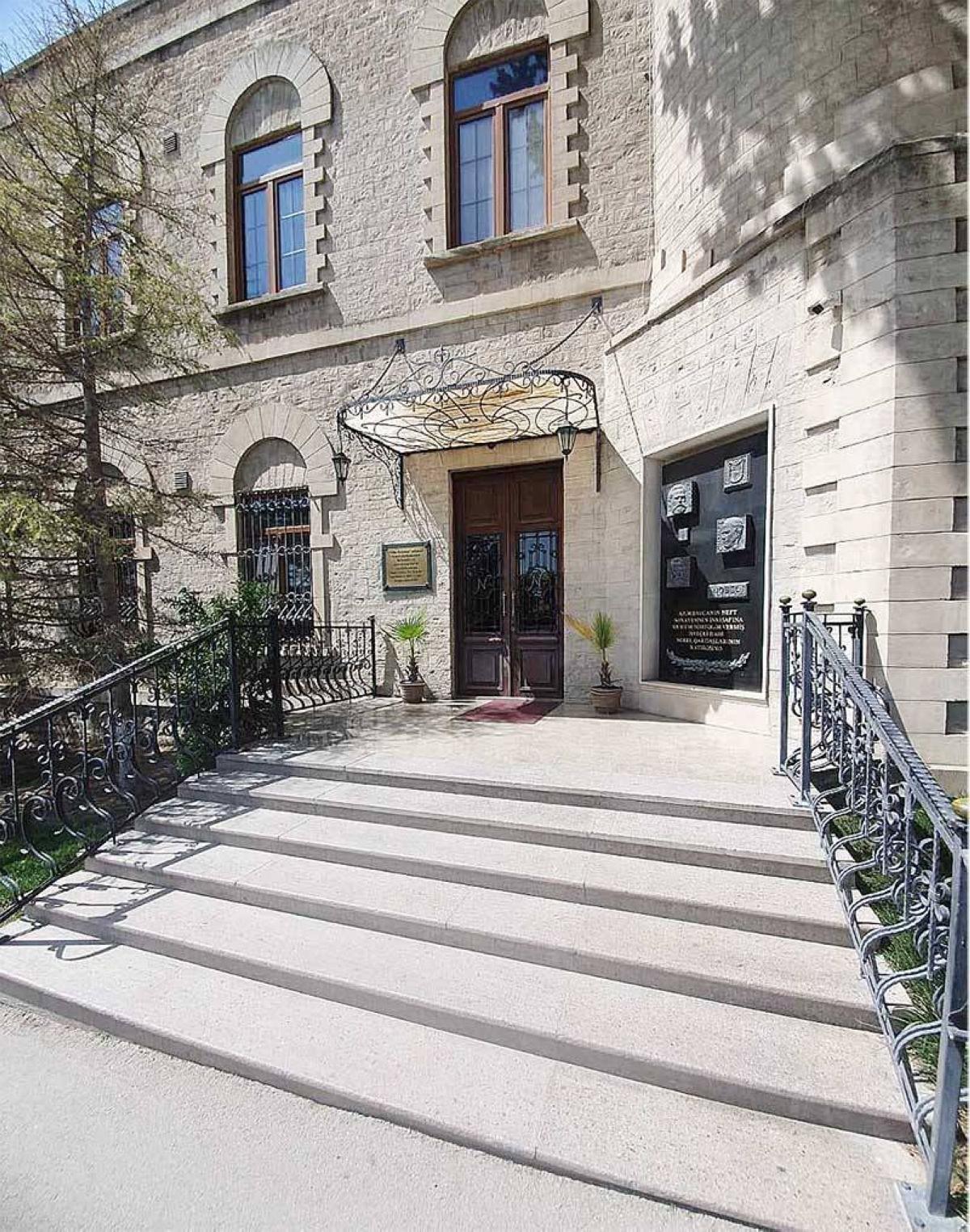
Villa Petrolea was designed not only as a residential space but also as a comfortable environment for the Branobel employees and their families. The estate included a school, medical clinic, theater, Swedish Club House, and tennis courts. It was surrounded by lush gardens and featured innovative air conditioning systems using compressed air and ice brought from the Volga River during winter months.
After years of neglect, the Baku Nobel Heritage Fund undertook the restoration of Villa Petrolea, completing the project in 2008. Today, the restored villa functions as a museum showcasing the Nobel family's contributions to the oil industry and the cultural exchange between East and West. It also hosts an International Conference Center and the Baku Nobel Oil Club, preserving the legacy of the Nobel brothers and their impact on Baku's development.
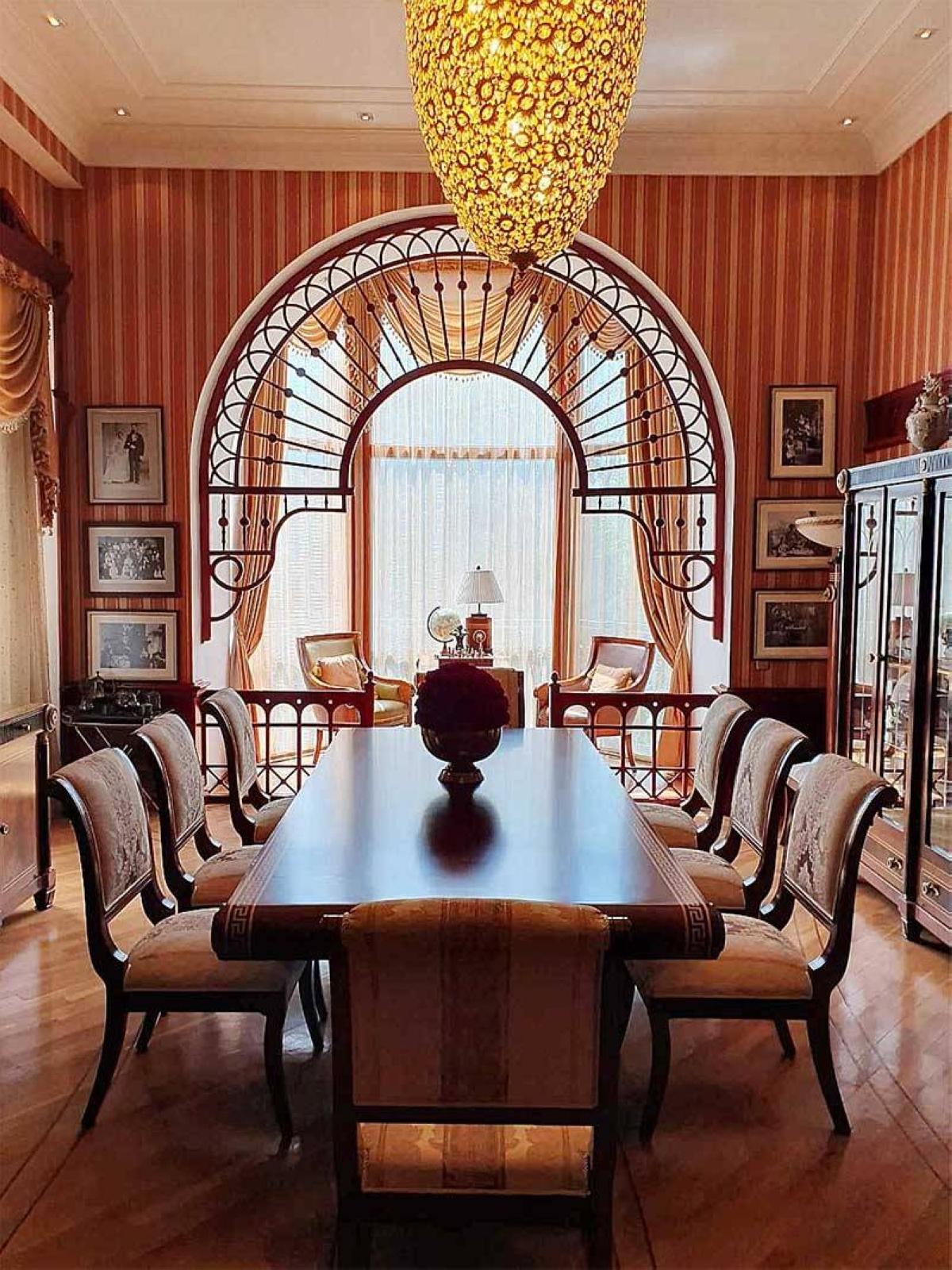
The museum highlights the technological advancements and the Nobel brothers' significant social and economic contributions to Azerbaijan. It stands as a testament to the blend of industrial prowess and cultural patronage that characterized the Nobel family's presence in Baku.








